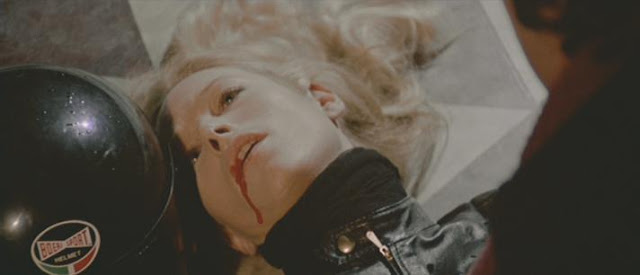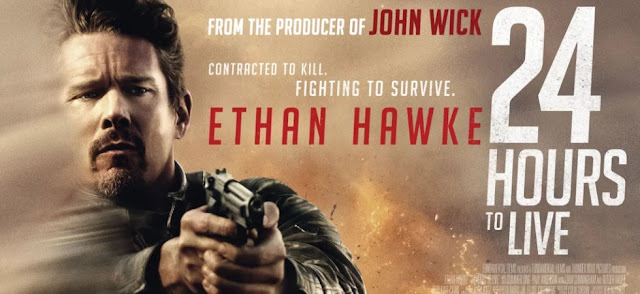
It’s a wonder to me that Pretty Poison isn’t more well known, or that it isn’t more celebrated beyond the hardcore and dedicated cinephile. While I find that staggering, I can possibly chalk that up to star Anthony Perkins' post-Psycho career, in that, after having created quite possibly the greatest screen killer of all time, how on earth is one supposed to live up to that? While I can understand that, it doesn't make it any less of a shame.
The best kinds of dark comedies are those that don’t reveal their hand too early on in the running. As a plot progresses and becomes embroiled in more and more absurdity, and you start to realize that the universe in which you’re immersed is very askew and not adhering to the rules of normality, that’s when a dark comedy is at its most rewarding.
Going into Pretty Poison totally blind encourages that reaction. Following a fairly tragic beginning in which a young man is released from a facility for an as-of-yet unknown crime and warned by his parole officer of sorts to stay out of his head and knock off the fantasyland stuff, Pretty Poison at first presents itself as a film about a sad, lonely guy with no one to call friend or family, and who instead resorts to disappearing within himself in an effort to become more interesting and intriguing than he actually is. But, like all the best dark comedies, it’s as the plot slowly unfolds and he falls head-over-feels in love with a very young girl that his fantasy collides with reality in the most unfortunate way possible and leads to some absolutely bizarre and unexpected directions.

Anthony Perkins’ most famous role — that of Norman Bates in Alfred Hitchcock’s legendary Psycho— haunted the actor for the rest of his days in ways both good and bad. Obviously Perkins knew following the reception of Psycho that Norman Bates was a once-in-a-lifetime role (even if he would go on to play the character three more times), but as can happen to many other actors, he was soon typecast. No one could look at the actor and see Anthony Perkins — they saw Norman Bates. And because of that, Perkins would be saddled with roles as the weird guy, the murderer, the sexual deviant — and in films of low caliber that Perkins’ talent far overshadowed.
Eight years following Psycho‘s release, he played Dennis Pitt, not quite Norman Bates-lite, but definitely a character with some heavy emotional baggage that puts him in situations where he’s suddenly finding ways to dispose of dead bodies for someone he loves. (Sound familiar?) But unlike the sinister and brooding Norman Bates, Dennis Pitt is lively, charming, even funny; and Perkins — once you’re in on the joke — is an absolute hoot to watch. His dry, overly serious manner of impressing the beautiful Tuesday Weld’s Sue Anne Stepanek, a high school girl and majorette in the marching band, with his diatribes about secrecy and cloak-and-dagger generalizations is effortlessly funny. Even if in a not-so-obvious comedy, Perkins has never been more engaging and amusing in a role where he essentially spoofs the very dry Joe Friday from television’s then-current Dragnet.

But matching his stride is Weld herself, eagerly playing sexy and faux-naiveté for her own style of humor. And she does certainly come across as equally sexy and dangerous in the way director Noel Black intends — her using her body to weigh down one of their poor victims into the river to drown him, with her legs splayed open and her summer dress rolled back, goes a fine distance in bringing that realization to the screen. She’s charming in that girl-next-door way, but she’s also stunning and intoxicating in that forbidden schoolgirl way; her performance suggests that either she’s as entirely gullible as Dennis Pitt hopes she is, or she’s up to her own brand of mental espionage.
It was through sheer coincidence that about a day or two after watching Pretty Poison for the first time that I slipped in True Lies strictly for some leisure watching. Suddenly, the subplot about liar Bill Paxton attempting to woo Jamie Lee Curtis by spinning yarns about being an agent for the CIA and currently entrenched in a top secret mission suddenly felt very familiar. But, being that James Cameron has never met an idea he didn’t want to borrow, I guess it’s comforting to know that perhaps Pretty Poison hasn’t been totally forgotten after all.
Pretty Poison can easily be referred to as that other excellent film where Anthony Perkins plays someone not quite right in the head, while also being a fairly more obvious attempt at comedy when compared to Psycho (although rumors abound that Hitchcock always thought of his most famous film as a black comedy as well). Further, Pretty Poison proves that Perkins was a talented actor who remained fairly undervalued for the remainder of his post-Psycho career, never fully able to get out from under its shadow.
Pretty Poison is now available on Blu-ray from Twilight Time.
































